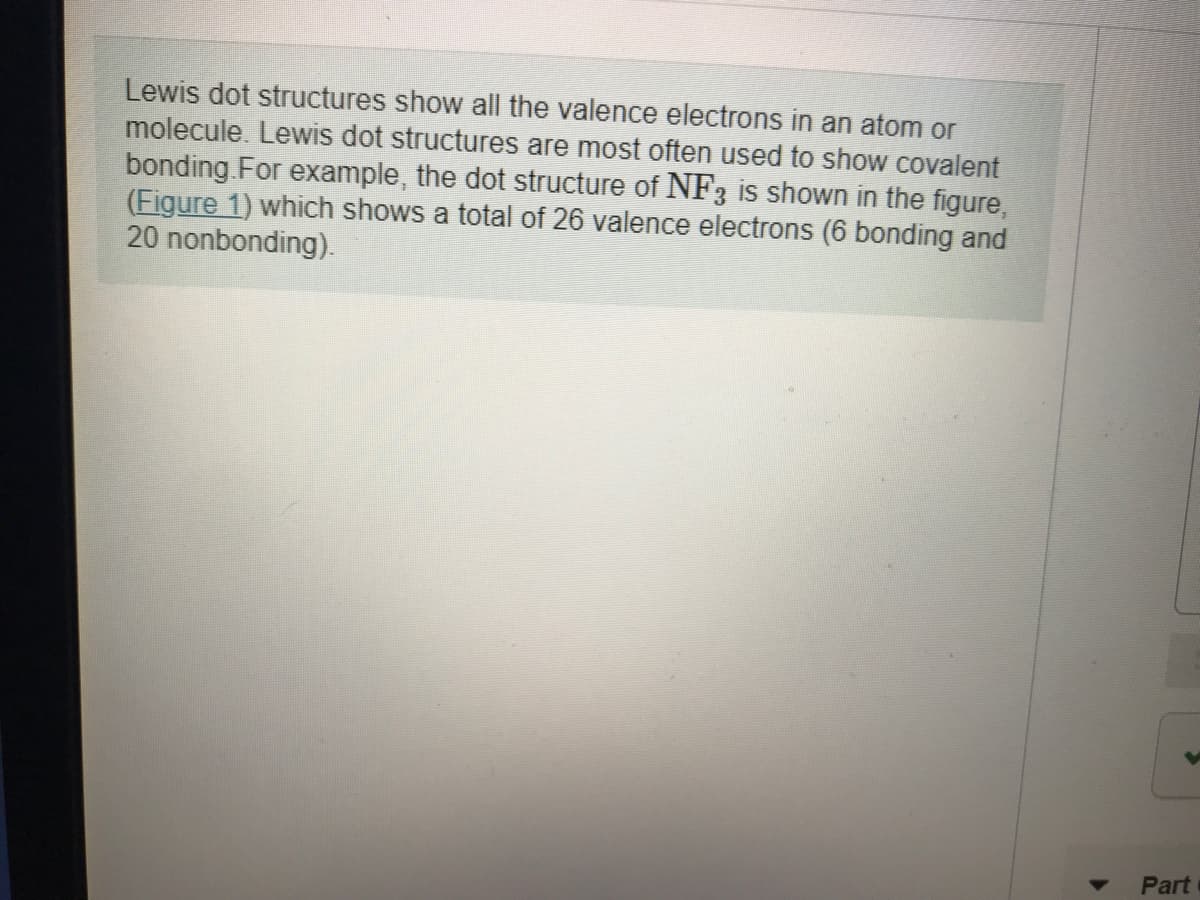Determine the number of bonding electrons and the number of nonbonding electrons in the structure of CS2 Enter the number of bonding electrons followed by the number of nonbonding electrons in the dot structure of this molecule separated by a comma (e.g., 1,2). • View Available Hint(s)
Determine the number of bonding electrons and the number of nonbonding electrons in the structure of CS2 Enter the number of bonding electrons followed by the number of nonbonding electrons in the dot structure of this molecule separated by a comma (e.g., 1,2). • View Available Hint(s)
Principles of Modern Chemistry
8th Edition
ISBN:9781305079113
Author:David W. Oxtoby, H. Pat Gillis, Laurie J. Butler
Publisher:David W. Oxtoby, H. Pat Gillis, Laurie J. Butler
Chapter3: Atomic Shells And Classical Models Of Chemical Bonding
Section: Chapter Questions
Problem 11P: Use the data in Table 3.1 to plot the logarithm of ionization energy versus the number of electrons...
Related questions
Question

Transcribed Image Text:Lewis dot structures show all the valence electrons in an atom or
molecule. Lewis dot structures are most often used to show covalent
bonding For example, the dot structure of NF3 is shown in the figure,
(Figure 1) which shows a total of 26 valence electrons (6 bonding and
20 nonbonding).
Part

Transcribed Image Text:Part A
Determine the number of bonding electrons and the number of nonbonding electrons in the structure of CS2
Enter the number of bonding electrons followed by the number of nonbonding electrons in the dot structure of this molecule separated by a comma (e.g.,
1,2).
• View Available Hint(s)
Submit
Expert Solution
This question has been solved!
Explore an expertly crafted, step-by-step solution for a thorough understanding of key concepts.
This is a popular solution!
Trending now
This is a popular solution!
Step by step
Solved in 2 steps with 2 images

Knowledge Booster
Learn more about
Need a deep-dive on the concept behind this application? Look no further. Learn more about this topic, chemistry and related others by exploring similar questions and additional content below.Recommended textbooks for you

Principles of Modern Chemistry
Chemistry
ISBN:
9781305079113
Author:
David W. Oxtoby, H. Pat Gillis, Laurie J. Butler
Publisher:
Cengage Learning

Chemistry: The Molecular Science
Chemistry
ISBN:
9781285199047
Author:
John W. Moore, Conrad L. Stanitski
Publisher:
Cengage Learning

Organic Chemistry: A Guided Inquiry
Chemistry
ISBN:
9780618974122
Author:
Andrei Straumanis
Publisher:
Cengage Learning

Principles of Modern Chemistry
Chemistry
ISBN:
9781305079113
Author:
David W. Oxtoby, H. Pat Gillis, Laurie J. Butler
Publisher:
Cengage Learning

Chemistry: The Molecular Science
Chemistry
ISBN:
9781285199047
Author:
John W. Moore, Conrad L. Stanitski
Publisher:
Cengage Learning

Organic Chemistry: A Guided Inquiry
Chemistry
ISBN:
9780618974122
Author:
Andrei Straumanis
Publisher:
Cengage Learning

Chemistry & Chemical Reactivity
Chemistry
ISBN:
9781133949640
Author:
John C. Kotz, Paul M. Treichel, John Townsend, David Treichel
Publisher:
Cengage Learning

Chemistry & Chemical Reactivity
Chemistry
ISBN:
9781337399074
Author:
John C. Kotz, Paul M. Treichel, John Townsend, David Treichel
Publisher:
Cengage Learning

Physical Chemistry
Chemistry
ISBN:
9781133958437
Author:
Ball, David W. (david Warren), BAER, Tomas
Publisher:
Wadsworth Cengage Learning,